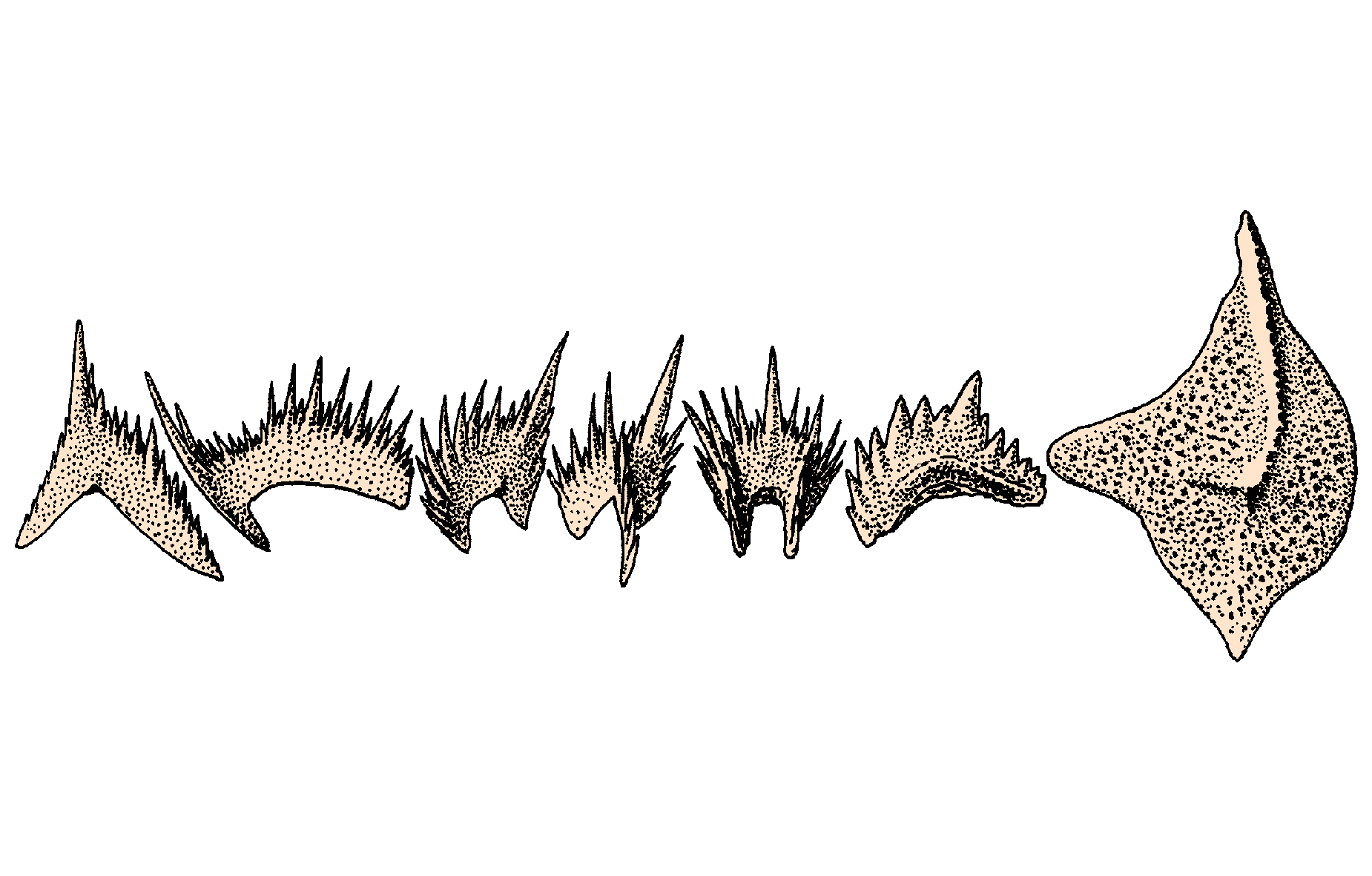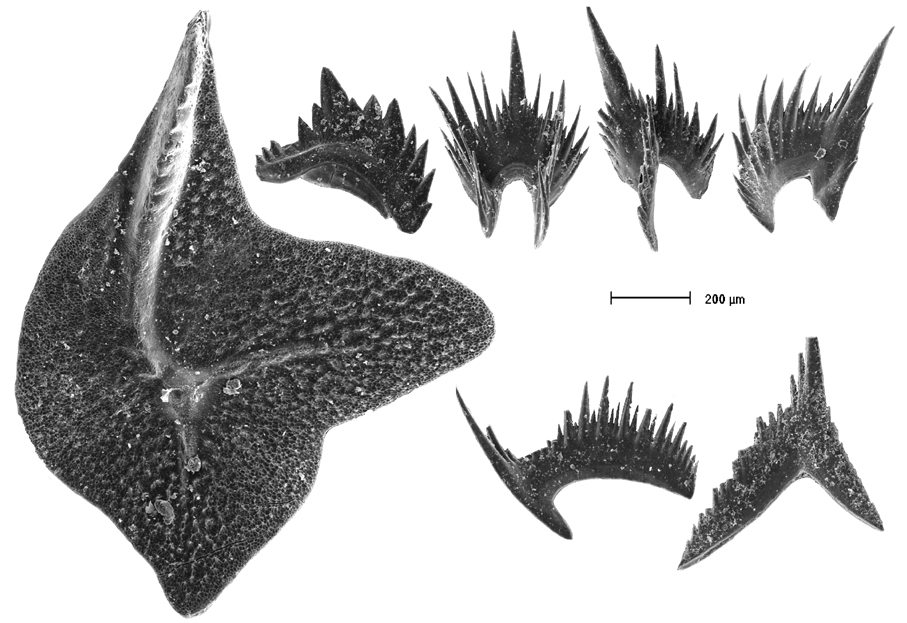Klapperilepis ultima
Sugerowana cytacja: Dzik, J. 2013. Klapperilepis ultima (Ziegler, 1958) . Ikonoteka (http://ikonoteka.paleo.pan.pl/xwiki/bin/viewrev/Species/Klapperilepis+ultima+)
Diagnoza Relatively wide and short platform of P1 elements with raised dorsal tip (instead of being bent down as in other Frasnian palmatolepididas), underived appearance of A-shaped M elements; relatively ontogenetically late bifurcation of processes in S0 elements. Porównanie The species was originally defined typologically on the basis of a flat (instead of curved downward, as in the Frasnian species Manticolepis, or raised, as in the Famennian P. triangularis) dorsal part of the P1 elements. In result, it is reported to occur as late as in the mid P. triangularis Zone. Actually, this character is rather variable within both the late Frasnian and earliest Famennian samples. The main difference in respect to the type population of K. triangularis consists in a wider platform, but this character is size-dependent. Autekologia The origin of the lineage remains cryptic; presumably it represents an exotic open-sea and cold-water element that earlier inhabited Frasnian higher latitudes. Występowanie geograficzne Worldwide in the Late Devonian tropics. Zasięg czasowy Latest Frasnian (Lower to Upper Kellwasserkalk)and the earliest part of the Famennnian Materiały muzealne ZPAL: 2,084 specimens (1,207 from the Famennian). Literatura Dzik, J. 2002. Emergence and collapse of the Frasnian conodont and ammonoid communities in the Holy Cross Mountains, Poland. Acta Palaeontologica Polonica 47, 565-650. Dzik, J. 2006. The Famennian „Golden Age” of conodonts and ammonoids in the Polish part of the Variscan sea. Palaeontologia Polonica 63, 1-359. Rakociński, M., Pisarzowska, A., Janiszewska, K. & Szrek, P. 2016. Depositional conditions during the Lower Kellwasser Event (Late Frasnian) in the deep-shelf Łysogóry Basin of the Holy Cross Mountains Poland. Lethaia 49, 571–590 (Fig. 3T labelled Polygnathus webbi). |
|


